Q
How much does a Kia EV6 cost?
In Malaysia, the price of the Kia EV6 varies depending on the model and configuration. Currently, the price range is approximately between RM200,000 and RM300,000, specifically depending on the selected version (such as the standard - range or long - range version) and additional configurations. As a pure - electric SUV, the EV6 has caught people's attention with its modern design, advanced technology, and excellent performance. For example, some versions offer a driving range of over 500 kilometers and fast - charging capabilities, which meet the local consumers' needs for environmental friendliness and practicality. The Malaysian government has provided some tax incentives to promote electric vehicles, which may affect the final cost of purchasing a car. It is recommended to confirm the latest prices and promotional policies with an authorized dealer before buying a car. In addition, the EV6 is equipped with an intelligent driving assistance system and high - quality interior, which showcases Kia's technological strength in the field of electric vehicles. For users considering electric vehicles, this car is worth being included in the comparison list.
Special Disclaimer: This content is published by users and does not represent the views or position of PCauto.
Related Q&A
Q
What is the life expectancy of the Kia EV6?
As an advanced electric vehicle, the lifespan of the Kia EV6 mainly depends on the usage and daily maintenance of its battery pack. According to industry standards, the battery packs of modern electric vehicles can usually maintain a range for 8 to 10 years or about 160,000 to 200,000 kilometers under normal usage conditions. After that, the battery capacity may gradually decline to 70% - 80% of its original capacity, but it can still be used. Kia offers a battery warranty policy for the EV6 in Malaysia, generally covering 7 years or 150,000 kilometers, which provides additional protection for the owners. It is recommended that owners conduct regular battery health checks and follow the manufacturer's maintenance guidelines to extend the vehicle's lifespan. The motor and transmission system of electric vehicles have a relatively simple structure and low maintenance costs, which is also one of the advantages of the EV6 in long - term use. Regarding the climate conditions in Malaysia, the high temperature and humidity may have a slight impact on the battery performance, but Kia's battery management system has been optimized for such environments to ensure stability and safety. Overall, as long as it is properly maintained, the EV6 can meet the long - term vehicle usage needs of most users. Meanwhile, the environmental - friendly features and low operating costs of electric vehicles also make it a practical choice in the Malaysian market.
Q
Is the Kia EV6 safe in a crash?
The Kia EV6 performs excellently in collision safety. It received a five-star rating in the tests conducted by the European New Car Assessment Programme (Euro NCAP), which proves that it meets high standards in aspects such as adult occupant protection, child occupant protection, vulnerable road user protection, and safety assist systems. It especially shines in the frontal and side collision tests. The vehicle has a sturdy body structure and a quick - reacting airbag system, which can effectively protect the safety of passengers inside the car.
For Malaysian consumers, the EV6 is also equipped with a wealth of active safety technologies, such as forward collision warning, lane - keeping assist, and blind - spot monitoring. These functions can further enhance safety during daily driving.
In addition, the EV6 uses a dedicated electric vehicle platform, and the battery pack is protected by a sturdy frame, which reduces the risk of battery damage during a collision. This is also an important consideration in the safety design of electric vehicles.
If you're thinking about buying an EV6 in Malaysia, you can have confidence in its safety performance. At the same time, it's recommended that you take a test drive at an authorized dealer to personally experience its driving feel and the practicality of its safety features.
Q
Is the Kia EV6 a good car?
The Kia EV6 is an electric vehicle that has attracted significant attention in the Malaysian market. It has won the favor of many consumers with its excellent performance and advanced technology. The EV6 is built on the E-GMP electric vehicle platform dedicated by the Hyundai Motor Group, offering excellent range. It can reach up to 528 kilometers (WLTP standard), which is suitable for long - distance driving needs in Malaysia. Its fast - charging function can charge the battery from 10% to 80% in just 18 minutes, greatly reducing the charging waiting time.
In terms of the interior, the EV6 is equipped with dual 12.3 - inch curved displays and an Advanced Driver - Assistance System (ADAS), exuding a strong sense of technology. In terms of power performance, the EV6 GT version has a powerful output of 585 horsepower, and it can accelerate from 0 to 100 km/h in just 3.5 seconds, meeting the needs of users who pursue driving pleasure.
For Malaysian consumers, the EV6 also has good adaptability. Its chassis tuning can handle the local variable road conditions, and the battery system has also been tested in high - temperature environments to ensure reliability. In addition, Kia has a relatively complete after - sales service network in Malaysia, providing convenient maintenance support for electric vehicle users.
Overall, the Kia EV6 is an electric vehicle that combines performance, technology, and practicality, making it suitable for consumers who want to try electric vehicles without compromising on the driving experience.
Q
How much does it cost to replace a Kia EV battery?
The cost of replacing a Kia EV battery in Malaysia generally ranges from RM30,000 to RM60,000. The specific price depends on the vehicle model, battery capacity, and whether you choose the original - factory or third - party repair services. For example, the Kia Niro EV has a larger battery pack, so its replacement cost might be higher.
In Malaysia, the price of an EV battery usually includes the cost of the battery module, labor fees, and system inspection fees. Some repair centers may offer installment - plan payment options or warranty services. It is recommended that car owners consult the officially authorized service centers for accurate quotes.
Moreover, the lifespan of an EV battery typically lasts 8 to 10 years or 150,000 to 200,000 kilometers. Regular maintenance, such as avoiding excessive fast charging or long - term full - charge storage, can extend the battery's performance. If the battery capacity drops below 70%, car owners can consider having a professional inspection to determine whether a replacement is necessary. In some cases, only individual battery modules need to be repaired to cut down the cost.
Currently, the Malaysian government offers tax incentives for EVs, and there might be a battery replacement subsidy policy in the future, which is worthy of car owners' attention.
Q
What is the Kia EV6 equivalent to?
As a pure-electric crossover SUV, the main competitors of the Kia EV6 in the Malaysian market include models such as the Tesla Model Y, Hyundai IONIQ 5, and Ford Mustang Mach-E. These models also focus on high performance and long range, and they are similarly positioned. The Kia EV6 stands out with its 800V ultra-fast charging technology, a maximum driving range of 510 kilometers (WLTP standard), and the GT version's ability to accelerate from 0 to 100 km/h in 3.5 seconds. It is particularly suitable for the needs of Malaysian consumers in terms of charging efficiency and driving experience.
When considering price and configuration, the EV6 is positioned between luxury and mainstream brands in the local market. Its positioning partially overlaps with that of models like the BYD Atto 3 or Toyota bZ4X, but it emphasizes more on sporty design and a sense of technology. For Malaysian users, the advantages of the EV6 also include the potential price advantage brought by local assembly (CKD) and the 8-year battery warranty policy provided by Kia Malaysia. These factors make it a practical choice for mid - to high - end electric vehicles.
In addition, the V2L (Vehicle-to-Load) function of the EV6 is very practical in the many outdoor scenarios in Southeast Asia, which further enhances its market competitiveness.
Q
Can you charge a Kia EV6 at Tesla?
Yes, the Kia EV6 can be charged at Tesla charging stations, but you need to pay attention to compatibility issues. Some of Tesla's Superchargers in Malaysia have been opened for electric vehicles of other brands. You just need to use a suitable adapter or start the charging via the Tesla app. However, the charging speed may be affected by the matching degree between the vehicle and the charging pile protocol. The Kia EV6 itself supports the CCS2 charging standard, and Tesla Superchargers also adopt the same standard, so it is theoretically compatible. But it is recommended to confirm whether the charging station supports non - Tesla vehicles before charging.
In addition, apart from Tesla, there are also other operators such as ChargeEV, Gentari, and Shell Recharge in Malaysia's public charging network, which provide CCS2 - compatible charging piles. EV6 owners can also choose these charging stations for a more flexible charging experience. For electric vehicle owners, it is very important to understand the vehicle's charging standard and the distribution of surrounding charging facilities. This way, they can better plan long - distance trips and avoid charging anxiety.
Q
How often do you need to service a Kia EV6?
According to the official advice from Kia Malaysia, as a pure electric vehicle, the maintenance cycle of the Kia EV6 is different from that of traditional fuel - powered cars. It is generally recommended to conduct a routine inspection every 12 months or every 15,000 kilometers, whichever comes first. The main items include checks on the battery system, brake fluid, coolant, as well as the tire and brake systems. Since electric vehicles don't have engines and transmissions, there's no need to change the engine oil or oil filter, which can significantly reduce maintenance costs and time.
For Malaysian car owners, the hot and humid climate may affect the battery life and the electrical system. Therefore, it's advisable to regularly check the battery cooling system and the tightness of high - voltage lines to ensure the vehicle maintains optimal performance in high - temperature environments.
In addition, although the mechanical structure of electric vehicles is relatively simple, attention still needs to be paid to the replacement of the air - conditioning filter, especially in areas with relatively serious air pollution in Malaysia. This helps maintain the air quality inside the vehicle.
The intelligent connectivity system of the Kia EV6 also undergoes OTA remote updates. Car owners don't need to go to the service center specifically for software upgrades. However, if there are system abnormalities, they should still contact the authorized repair points in time for handling.
Overall, the Kia EV6 has a lower maintenance frequency and is more cost - effective. However, regular maintenance is still the key to ensuring vehicle safety and extending its service life. It is recommended that car owners strictly follow the maintenance plan in the official manual.
Q
What are the cons of the Kia EV6?
As a pure - electric SUV, the Kia EV6 has good performance and advanced tech features in the Malaysian market. However, there are also some drawbacks that need to be considered.
Firstly, there's the issue of charging infrastructure. Malaysia's public charging network is still under development, especially in remote areas. This could affect the convenience of long - distance travel.
Secondly, the price is relatively high. Compared with fuel - powered vehicles in the same class or some hybrid models, the selling price of the EV6 may exceed the budget of some consumers.
In addition, although the EV6 has a good range, in extreme weather conditions such as high - temperature environments, the battery efficiency may be affected to a certain extent. This is a common challenge faced by electric vehicles.
Finally, since electric vehicle technology is relatively new, maintenance may require specialized technical support. The after - sales service network in some areas may not be fully developed.
For Malaysian consumers, when considering purchasing the EV6, it is recommended to check the nearby charging facilities and repair points in advance to ensure the convenience of daily use. At the same time, they can also compare other electric vehicle models to choose the option that best suits their needs.
Q
How long will a Kia EV6 battery last?
The battery life of the Kia EV6 typically lasts over 10 years or about 150,000 to 200,000 kilometers, depending on usage habits and maintenance. Modern electric vehicle battery technology is quite mature. The lithium-ion battery pack in the EV6 experiences a capacity decline of about 1% to 2% per year under normal use. This means that even after driving 100,000 kilometers, it can still retain over 80% of its original capacity.
For users in Malaysia, the hot climate might slightly speed up battery aging. However, the EV6's advanced battery management system can effectively regulate the temperature. It is recommended to avoid frequent fast charging and long - term full - charge storage to extend the battery life.
It's worth noting that Kia offers a battery warranty for the EV6 that lasts up to 7 years or 150,000 kilometers, covering the usage period of most car owners. Moreover, after the end of the electric vehicle battery's life, it can still be reused as an energy storage device. This environmentally friendly design also aligns with the global sustainable development trend.
If you're considering buying an EV6, you can be confident about its battery durability. Meanwhile, having regular battery health checks at an authorized service center can further ensure its performance.
Q
Should I charge my EV6 every day?
Regarding the question of whether you should charge the EV6 every day, it mainly depends on your daily usage needs and battery health considerations. As a modern electric vehicle, the optimal charging range for the EV6's lithium battery is generally recommended to be kept between 20% and 80%. Frequently charging the battery to full or completely discharging it may have a certain impact on the battery life. If your daily commuting distance is short and the remaining battery charge is still within a reasonable range, there's no need to charge it every day. You can charge it every few days, which is more conducive to extending the battery life. On the contrary, if you drive a long distance every day and consume a large amount of battery power, it's reasonable to charge it every day to ensure there's enough power for the next day.
In addition, the climate in Malaysia is hot. It's recommended to avoid charging for a long time in high - temperature environments as much as possible. Choosing to charge in a shady place or at night is more beneficial to the battery health. For EV owners, regularly checking the battery status and using the slow - charging mode also help maintain the battery performance. Meanwhile, reasonably planning the charging frequency and method can keep your EV6 in the best condition.
Latest Q&A
Q
Is Challenger 2 seater or 4 seater?
As a classic American muscle car, the seating configuration of the Challenger depends on the specific model version. Take the Dodge Challenger, which is quite common in the Malaysian market, as an example. The standard version of this car features a 2+2 four-seat layout (two full-sized seats in the front row plus two smaller seats in the rear row). However, high-performance versions like the SRT Hellcat may remove the rear seats and adopt a pure two-seat design to reduce the vehicle's weight.
Malaysian consumers should note that there may be differences in the configurations of imported models with different production years and displacements. It is recommended to confirm the specific specifications through local authorized dealers.
It's worth noting that this type of American muscle car is a niche model in Malaysia. Its wide body size (with a length of over 5 meters) requires some adaptation when driving on local narrow roads. Nevertheless, the powerful sound of the V8 engine and its classic styling still attract many car enthusiasts.
If practicality is a major consideration, SUV models like the Durango from the same brand are more suitable for family use. On the other hand, the Challenger is more suitable for enthusiasts who pursue the American-style sentiment and the experience of straight-line acceleration.
Q
What are the disadvantages of a Dodge Challenger?
The Dodge Challenger, as a classic American muscle car, has unique charm in terms of power performance and design style. However, it also has some limitations in the Malaysian market. First of all, its large-displacement engines (such as the 5.7L or 6.4L HEMI) result in high fuel consumption. In an environment where fuel prices in Malaysia fluctuate greatly, this may increase the cost of use. At the same time, the emission standards may also face stricter compliance requirements. Secondly, with a length of over 5 meters and a relatively wide wheelbase, it has poor flexibility on narrow roads or in old-style parking lots in cities like Kuala Lumpur. It is not as convenient as compact cars for daily commuting. In terms of interior space, although the front row is spacious, the rear-seat legroom is relatively cramped, making it more suitable for two passengers. In addition, as an imported vehicle, its parts supply cycle is long and the maintenance cost is higher than that of locally assembled models. Also, special attention should be paid to the performance of the factory-configured summer tires on wet roads in Malaysia's rainy climate. It's worth noting that the suspension tuning of American muscle cars is on the stiffer side, which may affect comfort in some areas of Malaysia with poor road conditions. However, for car enthusiasts who pursue personalization and the sound of a V8 engine, these features may also be regarded as part of its unique charm. It is recommended that potential buyers weigh their needs according to their actual usage scenarios.
Q
Is a Challenger an everyday car?
As a classic American muscle car, the Dodge Challenger was originally designed with a greater emphasis on performance and driving pleasure rather than daily commuting. However, it can still be used as a daily vehicle in specific usage scenarios in Malaysia. This car is equipped with large-displacement HEMI V8 engines (such as the R/T or Hellcat versions), which offer powerful performance but come with high fuel consumption. It may not be very cost-effective in congested areas like Kuala Lumpur. Nevertheless, the 3.6L V6 version (such as the SXT) has relatively better fuel efficiency, making it more suitable for daily driving.
The chassis of the Challenger is tuned to be on the stiffer side, which is well-suited to the good highway conditions in Malaysia. But when it comes to the old urban roads, the ride comfort will be reduced. In terms of interior space, the four-seat design can meet the needs of small families, and the trunk has a volume of up to 462 liters, making it more practical than many sports cars.
It's worth noting that in Malaysia's hot climate, special attention should be paid to mechanical heat dissipation. Moreover, the right-hand-drive version can only be obtained through parallel imports, and the maintenance cost will be higher than that of ordinary Japanese cars. If you have a sufficient budget and prefer the American style, the unique styling and exhaust sound of the Challenger can definitely turn a lot of heads. However, if you're looking for practicality at the same price, you can also consider Japanese performance sedans or European hot hatches. When making a choice, it is recommended to weigh the actual commuting distance and road conditions. After all, the charm of a muscle car lies in unleashing its wildness rather than compromising for daily use.
Q
Are challengers fuel efficient?
As a classic American muscle car, fuel economy isn't the main selling point of the Dodge Challenger. Especially in the V6 or V8 engine versions commonly seen in the Malaysian market, the urban fuel consumption is about 12-15 liters per 100 kilometers, and it can drop to 9-11 liters per 100 kilometers during highway cruising. This is slightly higher compared to Japanese or European performance cars in the same class, but it aligns with its emphasis on large-displacement power output and retro design concept.
If you're considering fuel efficiency, you can focus on the SXT version equipped with a 3.6L Pentastar V6 engine, or choose options like the rear-axle differential and active exhaust to improve highway cruising efficiency. Malaysian consumers should note that this type of American car is more suitable for long-distance driving or for collectors. If you commute frequently and care about fuel consumption, you can also compare local popular hybrid models such as the Toyota Camry Hybrid or the Honda City RS, which can optimize fuel performance while maintaining power.
When making an actual choice, it's advisable to consider your own driving habits and fuel budget, and take a test drive to experience the unique driving feel and the charming engine roar of an American muscle car.
Q
Do challengers last long?
The Dodge Challenger, a classic American muscle car, performs quite reliably in terms of durability. Especially its V8 engine versions like the Hellcat or Demon, with their robust mechanical structures and mature powertrain technologies, can run for a long time under proper maintenance. The climate in Malaysia is hot and humid. It's recommended that car owners pay special attention to the regular inspection of the cooling system and rubber parts. Meanwhile, choose engine oil and coolant suitable for the tropical climate to extend the vehicle's lifespan. American cars generally focus on low-speed and high-torque tuning, which is suitable for the stop-and-go traffic conditions in Malaysia, but they consume relatively more fuel. If you're considering long-term ownership, it's advisable to check whether the local after-sales network is well-established and if the supply of spare parts is sufficient. In fact, the durability of any vehicle highly depends on maintenance habits. Regularly replacing key components such as the timing belt and transmission fluid is crucial. For users who love muscle cars but are worried about maintenance costs, they can also consider Japanese performance cars like the Toyota Supra or the Nissan Z series, as their adaptability in tropical regions has been proven over a longer period.
View MoreRelated News
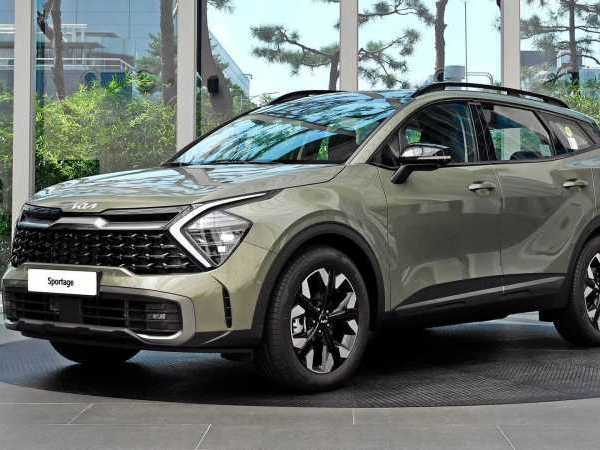
Kia Sportage: Superior Suspension for Smooth Ride
Kevin WongMay 19, 2025
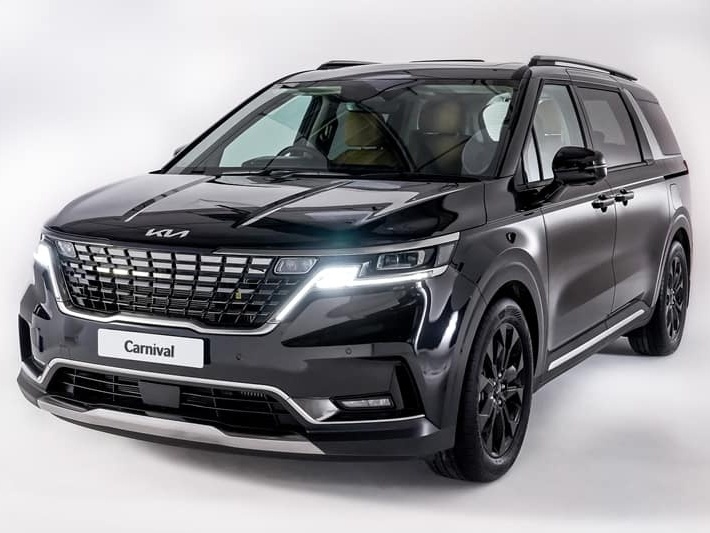
Kia Carnival: Spacious & Versatile for Every Journey
Kevin WongMay 19, 2025
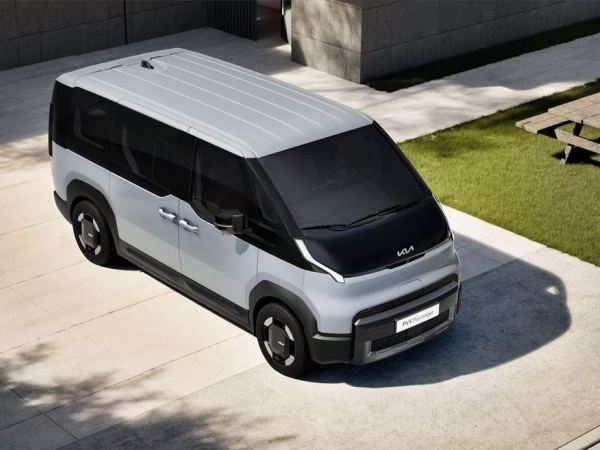
Kia reveals all details of PV5, with a maximum range of up to 400 kilometers
LienMar 11, 2025
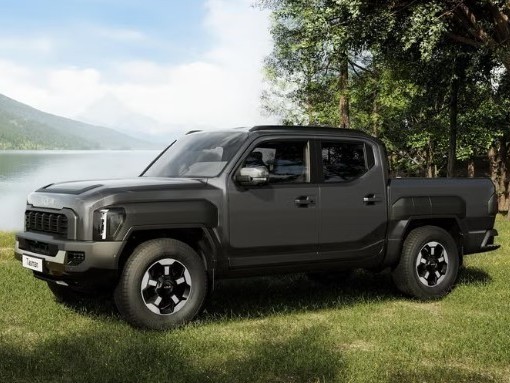
173L cargo box, 3500kg towing capacity, KIA Tasman meets all your needs!
MichaelOct 31, 2024

The interior of Kia's brand new pure electric sedan EV4 is exposed, expected to debut in mid-2025
MichaelOct 9, 2024
View More












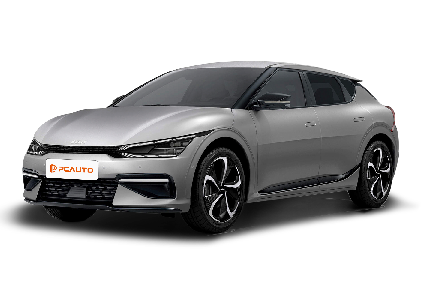
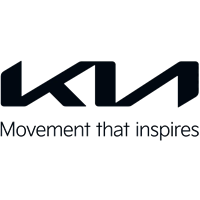 Cars
Cars




Pros
Cons